We helped the Humanitarian Innovation Fund translate research into actionable next steps for the humanitarian sector.
Research often leads to piles of information that are hard to act on. If you write this information up without synthesising and communicating it effectively, you will end up with an ineffective report. Because of this, we focus intensively on synthesis and communication in all of our work.
We recently did this kind of synthesis work for Elrha’s Humanitarian Innovation Fund (HIF). They support organisations developing innovations in humanitarian assistance and they’ve noticed that it's often difficult to scale these innovations. They wanted to write a report to help the humanitarian sector understand why scaling is difficult and take action to enable it. We helped them translate their experience and research findings into a set of clear and actionable challenges for the humanitarian sector.
Today we’ve launched our ‘Too tough to scale?’ report. Our report identifies the key barriers to scaling #humanitarian #innovations and calls for specific action to create transformative change. Read it! 👉 http://bit.ly/tootoughtoscale @DutchMFA @DFID_UK #tootoughtoscale
— The HIF (@The_HIF) October 17, 2018
Using challenges to structure thinking
We structured the report around challenges because they are a good way to stimulate action. Challenges are brief statements of a problem, the reasons for the problem, and how it might be solved. They help the reader quickly understand the situation and provide focus for a community of practitioners.
We based our challenges on research that had identified barriers to scale and recommendations for the sector. This research drew on the HIF’s experience in helping innovators scale their projects and on research carried out by Spring Impact, who are experts in scaling social innovation. We analysed this research and proposed a set of challenges and a structure for the report that we refined with the HIF team.
Five key challenges stood out:
- Too few humanitarian innovations are geared to scale
- The humanitarian sector has insufficient embedded knowledge and skills for supporting innovations to scale
- There is a lack of appropriate and adequate funding for scaling innovation in the sector
- There is insufficient evidence of the impact of humanitarian innovations
- The humanitarian ecosystem significantly frustrates efforts to scale humanitarian innovation
We developed the following structure to describe each challenge:
- Barriers: What is causing the challenge and what are the consequences?
- Current activity: What is the humanitarian sector currently doing about this challenge?
- Calls to action: What do different humanitarian actors need to do at both an operational and systemic level to address this challenge?
- Questions for the sector to consider: A series of provocations to encourage the sector to think differently about the challenge.
This structure gives humanitarian actors an understanding of the challenge, provides detail on what’s causing it, and gets them thinking about how they can solve it.
Opening up conversations
It might seem trivial, but something as simple as how research or insights are framed can shape the kind of conversations they enable. Identifying limitations and barriers is important, but advancing informed proposals on what needs to happen to address them can generate much more meaningful conversations.
This report represented an opportunity for the HIF to reflect on their work and consolidate their position as a leader in humanitarian innovation. By articulating concrete challenges and next steps for the sector, they now have a valuable tool they can use to work with stakeholders to unlock the systemic change needed to help innovations to scale.
To learn more about Too tough to scale? Challenges to scaling innovation in the humanitarian sector read the full report here.
How rapid prototyping can be used to accelerate life science software development
Building life science software products isn’t trivial. This blog post focuses on how our BioDesign team use prototyping to help kick off the process.
We often work on projects in their early stages when there is no user interface, or even before any coding has begun. At this point, there may only be a list of scientific and technical requirements, a founders’ broad vision for a product, or simply an initial hypothesis that has never been validated. Our response to this is to produce a prototype as quickly as possible, to turn an idea into something tangible.
This is part of our design-led approach, and we do it for a variety of reasons. Prototypes can be used to understand what people want from a software tool in user research interviews, or to explain the purpose of a new product as part of an investor pitch deck. Sometimes, these can be used as a tool to encourage internal discussion and to help create alignment in a team.
A very big thank you to the 20+ hackers working on our #biodatahack challenge: our ⭐️⭐️⭐️⭐️⭐️prize goes to Team 2.0 for its star system #UI, Repurposr. Well done! W/ @sciencepractice. pic.twitter.com/IYPFDZkZ0g
— Open Targets (@targetvalidate) July 4, 2018
We prototyped a new tool for repurposing existing drugs at the BioDataHack 2018 hackathon at the Wellcome Sanger Institute, and were part of the winning team for the OpenTargets challenge.
In general, a prototype is a stimulus — a talking point for a conversation. Because they are quick and cheap to produce, they are a great way to explore the possible workflows, features, and interactions of a new software product. This is particularly relevant to scientific software, where design patterns are not yet fully established. By trialling out options before committing to code, it is possible to save time and money by avoiding building products that people don’t understand or need.
The prototypes that we initially create are ordinarily mockups created in user interface (UI) design software such as Sketch. These are essentially drawings of UI, and can be made dynamic by using additional software that mimics interactivity. We use Marvel which is essentially an online slide show of static screens linked by hotspot buttons. These can be made to feel very similar to a real interface, in a fraction of the time taken to develop interfaces in code.
Project TrackBook is version-controlled shareable lab notebook. In just under 24 hours we designed, built, and filmed this prototype, and conducted initial user research at the eLife Innovation Sprint 2018.
At BioDesign, we use prototyping to…
Understand scientific users
As life science software becomes more sophisticated and widespread, the number and type of users broaden. For example, users of genetic analysis software can range from clinical geneticists to doctors and patients.
We use prototypes in interviews with users as a stimulus. Showing people something tangible helps focus conversations on the research question, and lessens the possibility of people misunderstanding what you are trying to do. For scientific products this allows you to understand the right level and type of scientific detail to include, and the context of use for your product. This insight is then used to help determine which features to build, and how workflows should be structured to match scientific work patterns.
Communicate an idea
Scientific software products are, by definition, based on scientific concepts, which can be complex to understand for newcomers. This can make it challenging to approach customers or investment in the early stages of a new product. One way to clearly communicate the potential utility of a new tool is through a prototype. For example, a prototype can be used to show a use case for the tool, helping people to ground the concept in real working practices.
Build alignment
It is not unusual for scientific products to have multiple stakeholders: universities, funding organisations, non-profits, for-profits… A prototype represents the first attempt at a consensus of a product and therefore will highlight areas in which people are not in agreement. By collating stakeholder feedback on the prototype, we can facilitate productive discussions about differences in ideas, and a path to alignment on a single vision for the product.
We think that rapid prototyping is one of the most useful design approaches that is not yet widespread in the scientific sector. As scientific software tools move to become software products, methods such as prototyping can allow these to be more focused on user needs and ultimately be more useful for people.
BioDesign team member Simon recently joined around 150 participants at the Wellcome Trust BioData Hackathon. Focused on finding novel ways to use biological data to improve healthcare, teams had 2 days to design, develop and present their solutions. We were thrilled to be a part of the winning team for the Open Targets challenge to identify drugs with the potential to be repurposed.
Incredible prizes up for grabs at #BioDataHack starting next week: which challenge will you work on? with @ACSCevents @Microsoft @CaviumInc @Atos @Arm @MedDiscCat @targetvalidate @AstraZeneca @WeAreSigma @BCGGamma pic.twitter.com/0tjRD2M6NT
— WellcomeGenomeCampus (@wellcomegenome) June 28, 2018
The Wellcome Trust’s Genome Campus is always an enjoyable place to visit. This time I was there for the BioData Hackathon, alongside around 150 participants with backgrounds in statistics, bioinformatics, genomics, medicine, design, entrepreneurship and more. We’d all come together to come up with new ways to use biological data to improve health outcomes.
Choosing a challenge
Although tempted by all of the challenges, I chose the challenge hosted by Open Targets - “How can we predict opportunities to repurpose drugs to treat unmet patient need?” as the intention was to not only come up with novel data analysis methods, but also to consider who might use the idea and in what context.
The focus of this challenge was all about the potential for existing drugs to be used as treatments for new symptoms and diseases. As is widely documented, the process of developing new drugs is both incredibly expensive, and very likely to fail. Drugs that are safe and effective are a scarce resource.
I quickly joined up with a fantastic team (Elodie, Ken, Joni, Rebecca and Robert,) with a variety of skills in bioinformatics, statistics, R and Python. Robert acted as a great project manager - making sure people knew what their jobs were, and that we were pulling together for one aim.
The sound of 120 people introducing themselves to each other at the @wellcomegenome #biodatahack pic.twitter.com/x1VpXataeu
— Steve O'Connor 🐙 (@stevedesigner) July 2, 2018
Who needs to repurpose drugs?
My first job was to understand the possible uses for a tool that could help identify existing drugs with the potential to be repurposed. Mentors for each of the challenges were available to provide guidance. Andrew Hercules, UX designer at Open Targets proved a great help, sharing his own insights from previous research on the possible uses for a drug reposing tool.
We also took inspiration from the opening talks, in particular, Gemma Chandratillake’s talk on the importance of improving diagnoses and therapies for rare disease.
Dr Gemma Chandratillake, trustee of the @camraredisease, reminds the attendees of the importance of keeping patient impact focused. #BioDataHack pic.twitter.com/l3oKO3FkT6
— Repositive.io (@repositiveio) July 2, 2018
After discussing a few different angles, we decided to pursue the idea of developing a tool that would help clinical researchers to identify possible treatments for patients with unusual sets of symptoms. These could be for research projects, or possibly to help assist prescriptions (although this would require significant validation).
Matching drugs to symptoms
The idea behind the tool was to separate diseases into their constituent symptoms, and then matching those symptoms to drugs known to treat them in any context. By searching for a collection of symptoms, you could then find a list of drugs that have been used to treat at least one of the symptoms. The better the match of a drug to the symptoms input, the higher the score it would be given.
To test the algorithm could work the team used example data provided by the Open Targets team including drug, phenotype and target information. By the end of the first day, (with a particular shout out to Joni), we had working code. Although not perfect, there was evidence that the approach could work, as a number of existing repurposed drugs were identified as high scorers. Of course this approach also pulled out drugs specifically targeted at these symptoms too. Finding a way to differentiate these is definitely something that would be a high priority for any further development.
Looking forward to another day hacking @wellcomegenome #BioDataHack ! pic.twitter.com/ko84BpUKY6
— Science Practice (@sciencepractice) July 3, 2018
Thinking about users
In the meantime I had got to work on a simple mockup for a possible UI. We imagined it as a search engine that would allow input of either a disease, or a set of symptoms. This would then return a list of drugs that have been recorded as treating some of those symptoms, and so could potentially be repurposed.
We decided to try and simplify this as much as possible. The scores were represented as different ‘buckets’, (from 1 to 5 stars) to give an indication of how strong a match was. Basic visualisations were also included to summarise some of the key information about the results. These included the top drug and target matches, as well as indications of how much each symptom contributed to the search results, and the phases of development of the drugs included. Indicating the development phase of a drug is important as drugs that have already been approved are the lowest hanging fruit for repurposing. Each visualisation would also be interactive, allowing filtering on the different properties.
Pitching the idea
From this point we focused on developing a good pitch - summarising the problem, our approach in the backend and a click-through of the prototype UI.
Four other excellent teams had also joined the challenge, and pitched their ideas to a team of judges. Each concept took a different perspective, including an idea to draw inspiration from Netflix’s personalised suggestion algorithm and a working tool using graph and machine learning technologies.
A very big thank you to the 20+ hackers working on our #biodatahack challenge: our ⭐️⭐️⭐️⭐️⭐️prize goes to Team 2.0 for its star system #UI, Repurposr. Well done! W/ @sciencepractice. pic.twitter.com/IYPFDZkZ0g
— Open Targets (@targetvalidate) July 4, 2018
The hackathon was drawn to a close with winners announced for each challenge. We were incredibly flattered to find out that our team had won our challenge, amongst some very strong teams. The aim is for the idea to now be carried forward, to validate the algorithmic approach as well as to better understand possible contexts of use, and user needs. We hope that this can be the seed for a new tool helping to find treatments for people with rare disease.
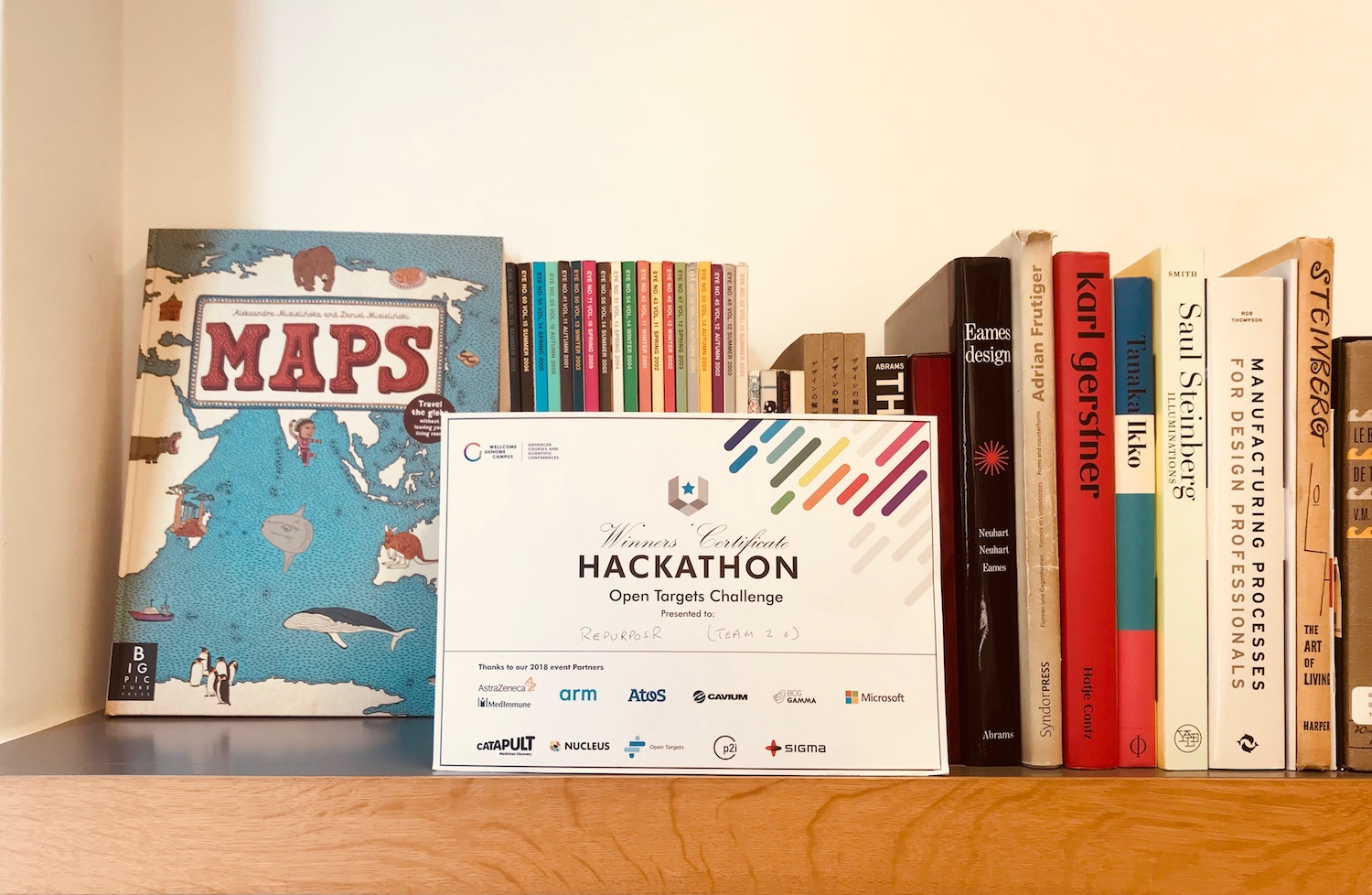
Thanks to:
-
The organising teams from Sigma, the Wellcome Genome Campus and GSK,
-
The Challenge Sponsors - Open Targets, Arm, Cavium, Atos, Astra Zeneca, MedImmune, Microsoft and Medicines Discovery Catapult.
Last month we travelled the world to discuss our BioDesign team’s work. We presented at the Pistoia Alliance UXLS Conference in Boston and the OpenVis Conf 2018 workshops in Paris.
We spoke about 5 principles of good information experience that we’ve found to be especially helpful in the design of software for the life sciences. In this post we explain these principles, why we think they matter, and how to use them in practice.

A key part of software design for the life sciences is understanding and shaping information experience. This means working to ensure that users know how data is processed, and offering opportunities to manipulate the ways in which a tool works. Most importantly it is about making it is as easy as possible to find patterns and insight in data.
Below we discuss 5 design principles that we use when designing software for the life sciences and how they can be implemented.
Transparency in Information Analysis
One of the main reasons for developing life science software is to automate some part of an analytical process through the use of algorithms, easing the burden on scientists. Often, most of the logic of an algorithm tends to be abstracted away from the users - it’s a ‘black box’ that no one can see into to make sense of.
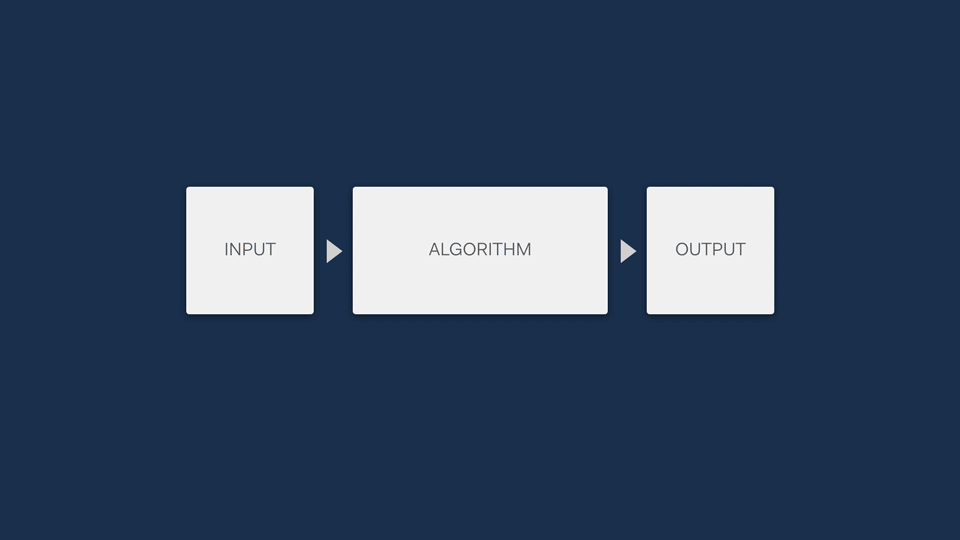
Unless people understand how a software algorithm works, they are unlikely to be able to trust it. For example, in clinical genetics labs like the one that Simon worked in, the sensitive nature of the work means that a tool won’t be used at all if lab scientists don’t have an understanding of the principles it is based on.
This means it’s a really good idea to find a way to open up the black box, showing the steps that an algorithm is making to allow users compare the mechanism of an algorithm to their own understanding of the process.
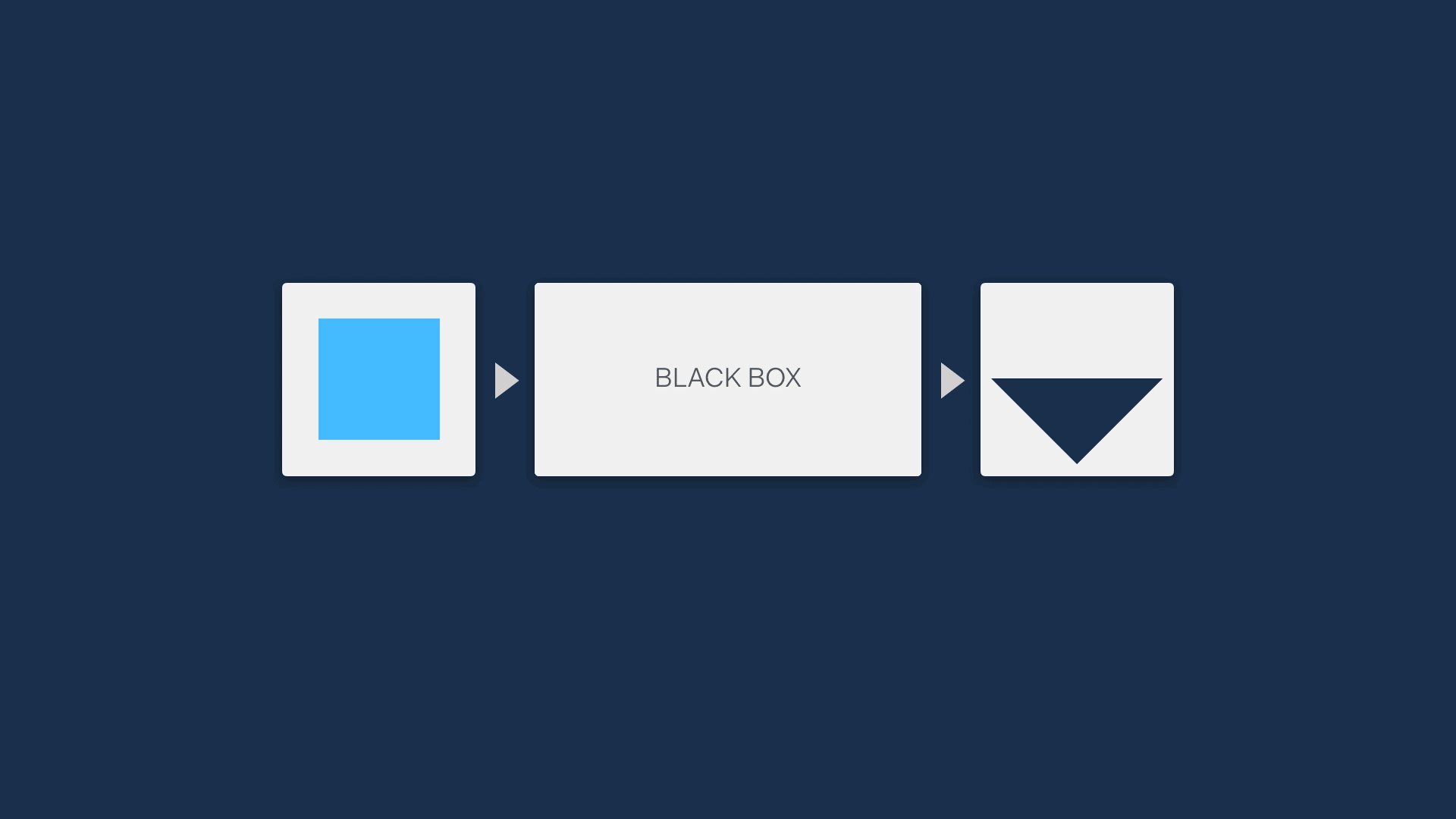
A great way to do this is visually. This can be a very quick method to describe functionality, while not revealing so much that IP is at risk.
Going further, if the method of revealing the steps in the process is also interactive, this not only increases the ease of understanding, but also makes it customisable — potentially increasing the utility and trustworthiness of the tool so it can be implemented in more contexts.
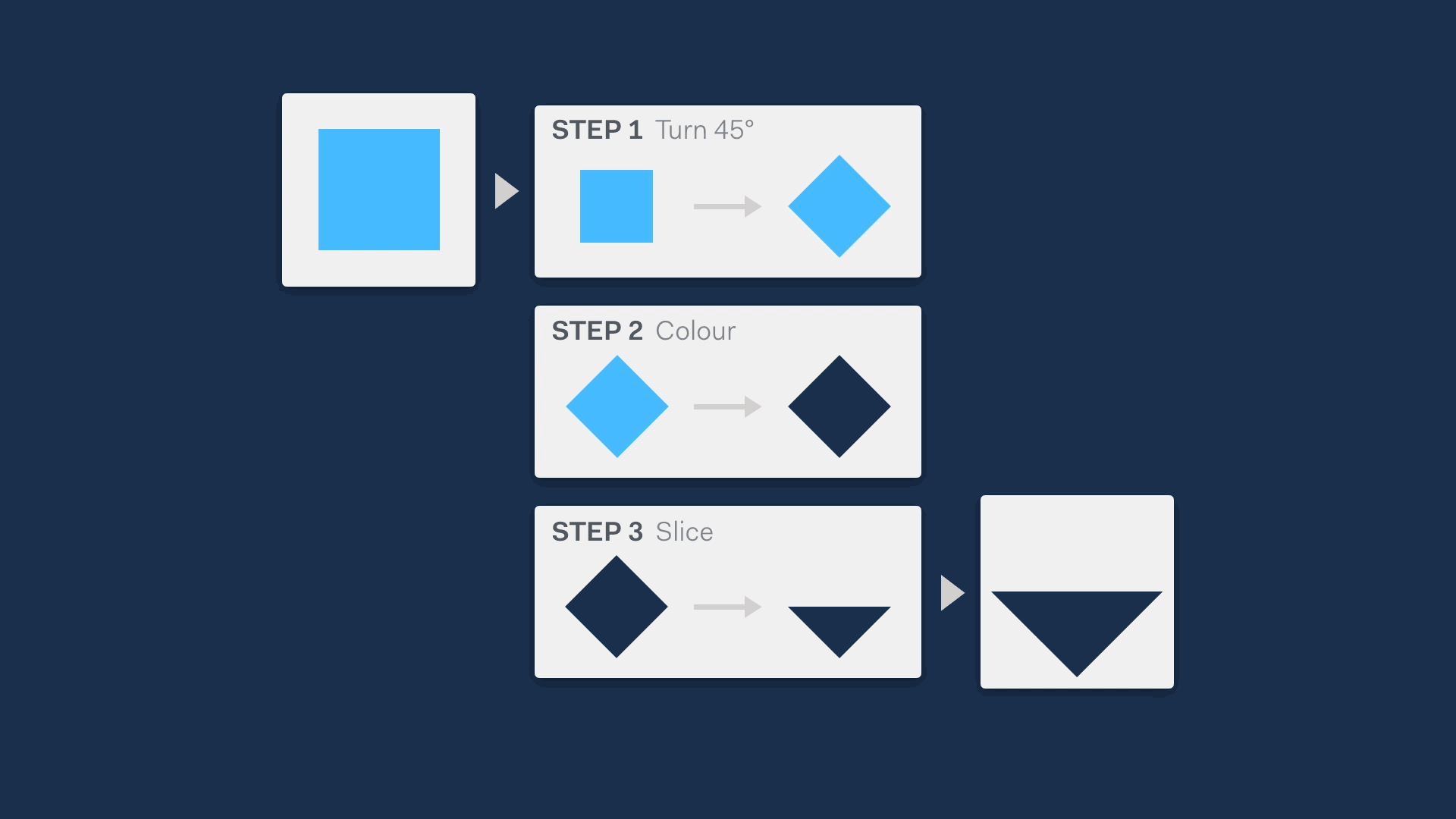
In our ‘Opening the black box’ case study we explain how we applied this first principle to help users understand the working of a clinical genetic analysis tool.
Information Hierarchy
A major challenge in the life sciences is the scale and richness of biological data. When using software tools for accessing or manipulating large biological datasets, it is easy to become overwhelmed, miss what you are looking for, and miss opportunities for discovery.
Understanding the information priorities of users – which data they want to compare and consume, and in what order – is key to preventing confusion.
In practical terms, applying the principles of information hierarchy can be quite simple. For example, this could be a matter of prioritising information using colour, size, and order of different information types.
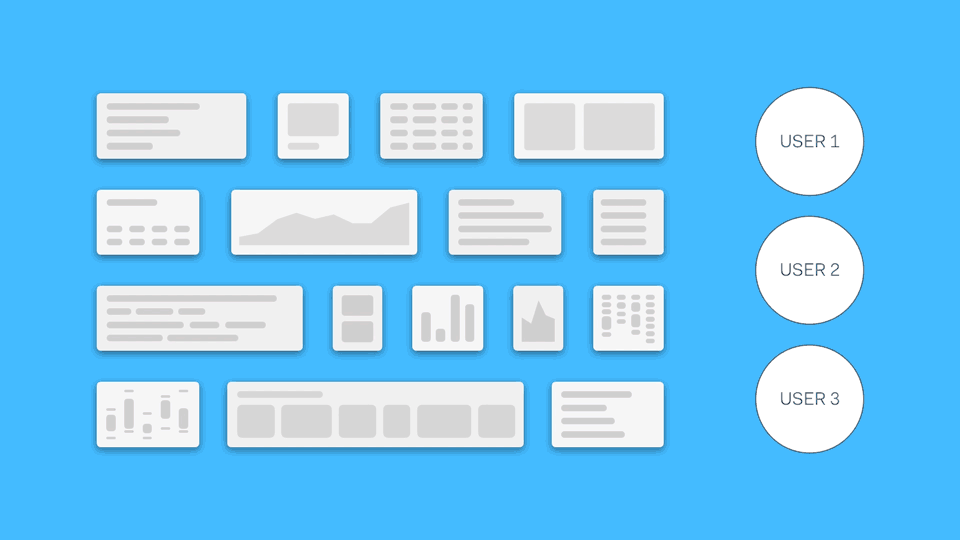
Other approaches involve moving less important (or more technical) information a click away behind drop-downs or on secondary pages. Standard design patterns proven in other domains are equally useful in the life sciences.
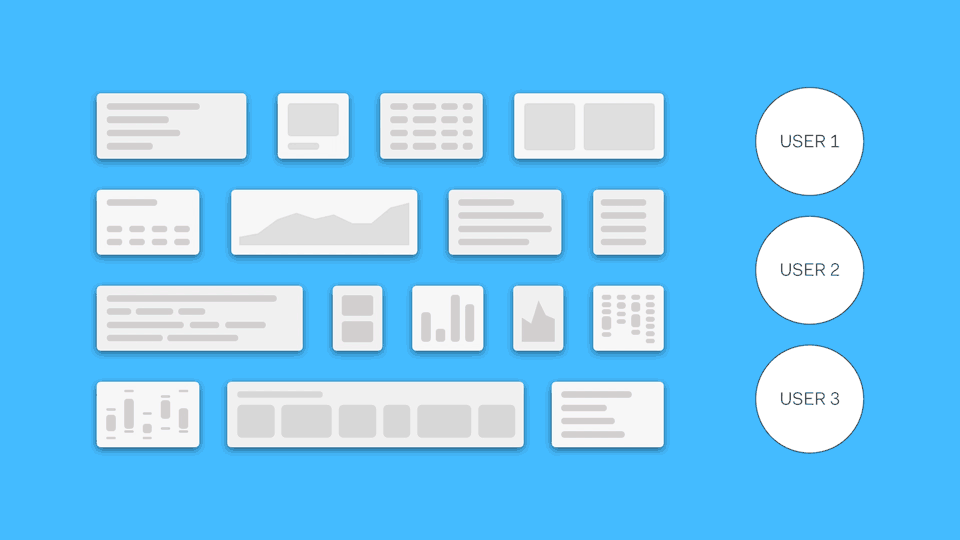
It’s important to bear in mind that information priority is not universal. Depending on what they’re using a software tool for, users will have different opinions on what they need to see first, what second, and so on. They will also have preferences regarding the level of control they need over the system’s functionality.
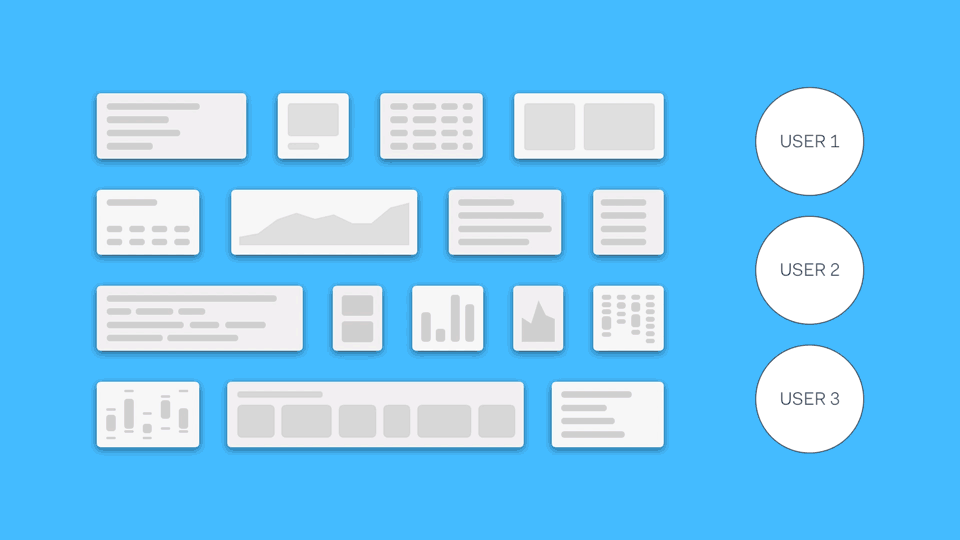
For example, bioinformaticians may need to know the type of sequencing platforms and the exact pipeline settings used in their experiments, while clinical scientists may prioritise access to journal articles in which disease symptoms are discussed. This means that designing the right level of interface customisability for different user types relies heavily on user research to understand preferences.
Flexible Workflows
Scientific workflows can switch rapidly from the ordinary to the novel as researchers respond to signals in their data. Software interfaces need to support streamlined completion of routine tasks as well as facilitating detours for more in-depth data exploration.
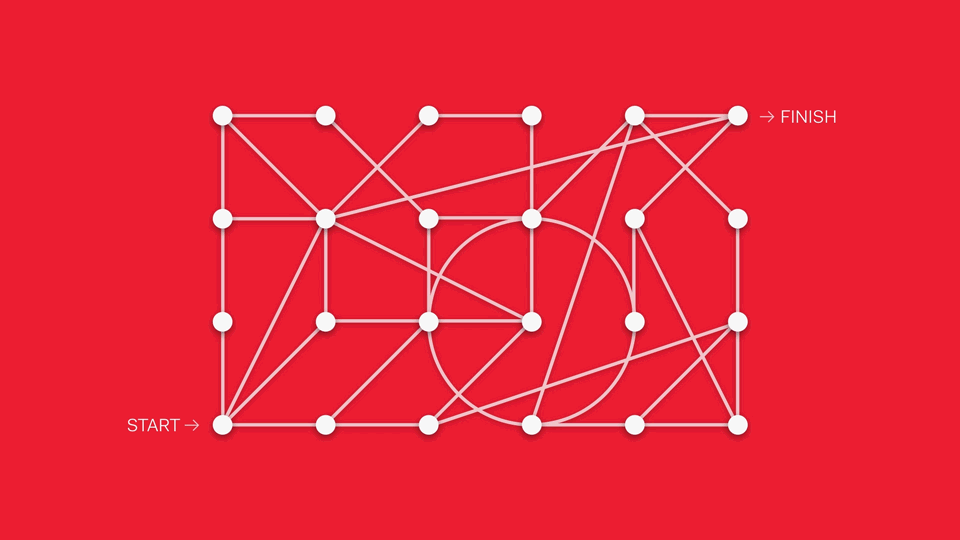
This can be challenging to implement in the life science context. Workflows can include multiple steps, protocols can vary from one lab to another, and best practices constantly evolve.
One way of addressing this is through treating different analytical features modularly, suggesting popular next steps from one module to another. Another approach is to pursue a sandpit style of software, in which there are no enforced workflows in favour of maximum flexibility (although this can create barriers to newcomers if the interface is too overwhelming).
Understanding what scientific users want to accomplish, their context, and their limitations is especially important for designing workflows that are optimal. At BioDesign we do this by observing existing patterns with currently used tools, and by prototyping and testing scenarios based on known use cases.
Encouraging Exploration of Results
Scientific information inherently lends itself to visualisation. Modern web browsers allow for visual representations that are multidimensional, dynamic, and interactive. However, because data in the life sciences is multidimensional and vast in size, it often makes it challenging to capture all significant information in a single visualisation format.

We believe it is important to give people the opportunity to view their data from a variety of perspectives, making it possible to find patterns, pull insights out of data, and generate new hypotheses.
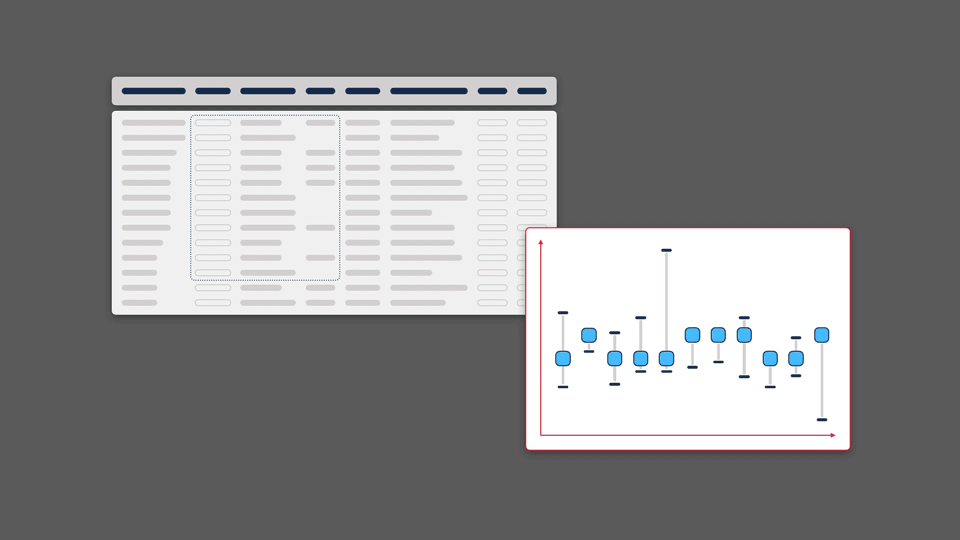
Of course, each visualisation type has its own strengths and weaknesses. Each graphic will highlight or emphasise certain aspects of the data, but may obscure or distort others. By paying close attention to what these factors are, and testing extensively with users, it is possible to develop novel and complementary visualisations that improve a scientist’s ability to making a discovery.
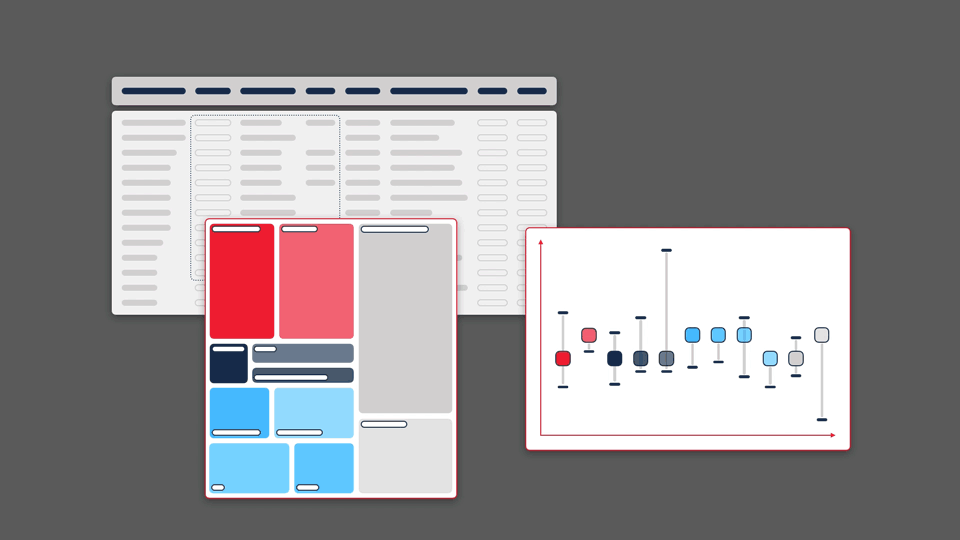
This principle guided our work for Sequence Bundles — a novel method for visualising sequence alignments that we designed and published as an open-source software tool. Sequence Bundles users can expose protein and DNA patterns that other visualisation methods would otherwise fail to surface.
Design-led Research
User research is essential to producing good software. Without it, it becomes easy to over-engineer functionality, or build confusing user interfaces (UIs). It is especially important for software development in the life sciences, where functionality is often complex and there are fewer instances of known design patterns that can be reliably followed.
At BioDesign, we use a design-led research approach in our work. This means that we produce design prototypes as early as possible in which we capture our best understanding of user interactions, workflows, information hierarchies, and data visualisations. We then use these prototypes in research interviews to test ideas and assumptions with user and experts.

A prototype can be a click-through mock-up, a diagram of a workflow, a screen from a proposed software UI, or a map of ideas… Anything that clearly indicates the concept or proposal that you want to test with users. Interviews should be recorded, then insights are pulled out and collated to build up a picture of a user’s needs, understanding, and intentions. Using this feedback as a basis for iteration allows for rapid improvement and refinement in the design of software.
We have found the design-led research approach to be most effective in the early stages of development, where open user feedback is instrumental in defining features, interaction models, and the scope of life science software.
Design Matters
Many hopes are placed in modern life science software: from providing genetic diagnoses to patients, to automating complex experiments, to identifying new drug targets, to organising entire domains of knowledge. Pivotal to all these promises is how we interact with information and data. Designing good information experiences for the life sciences will help these tools to meet their potential.
At the most basic they will be more efficient, but they can also be more compelling, delightful, and understandable. At their best, well-designed information experiences will enable scientists to find patterns that would otherwise have been missed, and formulate new hypotheses that can push research forward.
What if starting a science venture were as easy as starting a digital one?
In March, we spoke at SXSW 2018 about the kind of support and initiatives that could make it easier for scientists to build successful science-based startups outside of industry and academia. We brought together a panel that talked about the role of an engaged community, shared lab spaces and facilities, venture programmes, and funding.
🎙️ Listen to the audio recording of our SXSW panel here or carry on reading for the key points & updates since.
Kicking off our #sxsw panel with @gemmamilne @DominicFalcao @H_Destecroix & our very own @anaMflorescu: talking about building an ecosystem for science startups. pic.twitter.com/ovdG0oERsN
— Science Practice (@sciencepractice) March 14, 2018
An ecosystem for science ventures
Becoming an entrepreneur and starting your own digital company is now a common and accessible career option. That’s because, over the past decade, a lot of time and resources have gone into creating programmes, spaces, events and funding opportunities for people to come up with ideas, explore and grow them. The same is now happening for science-based startups.
We have been seeing this in the UK with the emergence of deep-tech focused accelerators and incubators, shared lab space and equipment, events and networking opportunities for scientists looking to start their own businesses, and funders turning to science innovation to increase their impact (and return). But most of these are nascent and often isolated from one another. We wanted to start a conversation to raise awareness of these different initiatives and to start thinking about them as part of a broader system — a system aimed to incentivise and empower scientists to build their own science ventures. Speaking at SXSW offered the perfect opportunity to do so.
South by Southwest (SXSW) is an exciting 10-day conference known for its fantastic diversity of cultural, political and technological events. This year, we added science to the mix. Our panel featured:
- Gemma Milne, co-founder at Science Disrupt — an organisation whose goal is to promote scientific innovation;
- Harry Destecroix, founder at Unit DX — the UK’s first independent science incubator;
- Dominic Falcão, co-founder at Deep Science Ventures — a science-focused venture builder;
- Ana Florescu, head of our Good Problems team — working with science and innovation funders to develop problem-driven programmes.
Ecosystem components
We discussed four ecosystem aspects — community, facilities, venture programmes, and funding. Below we provide a brief description of how these differ for science ventures and provide a couple of UK example initiatives.
1. A community of like-minded people
If you’re an entrepreneur looking to start a digital company, there’s a wide range of events, communities and conferences you can join to help meet potential collaborators, investors, and test your ideas. If you’re a scientist looking to set up a science business outside of academia or industry, your options are limited (although the Hello Tomorrow conference deserves a worthy mention here).
It was this gap that Gemma Milne and Lawrence Yolland tried to fill when they created Science: Disrupt — an organisation connecting innovators, iconoclasts and entrepreneurs interested in creating change in science. They have an online slack community with around 800 members, they produce podcasts, write editorials, and run events, all intended on sharing existing initiatives in this space, raising awareness of opportunities available for scientists beyond academia and industry. As part of the panel, Gemma talked about the value of having spaces where entrepreneurs can meet like-minded people, exchange ideas, and learn from each other.
2. Physical spaces for scientists to experiment and build their ideas
To create a digital startup you need a laptop and internet. To build a science startup you will most likely need a lab and equipment. Organisations like the London BioHackspace and Clustermarket are making it easier for science entrepreneurs to access the equipment and skills needed to test ideas.
As co-working spaces have demonstrated for digital startups, there is a significant added value in having different entrepreneurs working in the same space, sharing lessons, networks and expertise. These flexible shared work spaces and facilities are currently limited for science entrepreneurs.
Whilst founding Ziylo, a novel glucose monitoring tech, Harry Destecroix encountered the same problem in terms of lack of facilities for scientific spin-offs from local universities. So he set one up. Unit DX is the UK’s first independent science incubator, and now houses 18 early-stage science companies ranging from quantum to biotech startups. Harry talked about setting up Unit DX and empowering scientists to start their own companies.
3. Venture programmes tailored to science innovation
Going through an accelerator or incubator programme has become part of the regular journey for a digital startup. But programmes designed to support science ventures are still nascent. Examples include RebelBio – the world’s first life sciences accelerator, the BioCity incubators, and Deep Science Ventures (DSV).
DSV is a hypothesis-led venture builder that aims to create science companies from scratch. Modelled on the Entrepreneur First approach, twice a year they select a multidisciplinary group of elite scientists and engineers and support them in starting high-impact science companies. Dominic Falcão, co-founder at DSV, talked about what a minimum viable product looks like for a science startup and how they’re trying to manage funder and VC expectations when it comes to investing in deep-tech companies (they’ve also written a great piece on this here).
4. Problem-led funding opportunities and support
Innovation funds tend to be skewed towards digital solutions. That means that funders can start seeing solutions quite soon after investing, but the downside is that these often have a limited impact. In an attempt to maximise this impact, funders are increasingly looking at more complex problems that would benefit from science innovation.
Our Good Problems team works with such science and innovation funders. We help them identify relevant challenges and design incentives that can both motivate and support scientists in developing solutions — whether by running prizes, funding calls or offering access to mentors, training or lab space. Ana Florescu, our team lead, talked about the value of good problems and how they can provide an opportunity for scientists to turn their ideas into impactful ventures.
What next?
We’re keen to keep the conversation going and see how we can contribute to building a supportive ecosystem for science entrepreneurs. Here’s what we’ve been up to since the panel:
- Science Disrupt — Recently launched a new podcast series on ‘Responsible Science’. First two episodes are out, so start listening!
- Deep Science Ventures — Contributed to The House of Lords Science and Technology Committee’s report “Life Sciences Industrial Strategy: Who’s driving the bus?” and to the CBRE report “Life Sciences: Opportunity Under The Microscope”. And Dom was on a podcast!
- Unit DX — In April, they hosted the BrisSynBio, a 4-Day MBA designed for budding entrepreneurs, from postgraduates to seasoned academics, interested in starting a synthetic biology-rich business in the biotechnology or life sciences sectors (more here).
- Good Problems team — We’re currently working on turning our Playbook into a resource for science entrepreneurs and funders interested in finding good problems. If you’d like to find out more, please get in touch!
🎙️ Reminder – You can listen to our full SXSW2018 panel discussion here. Enjoy!

